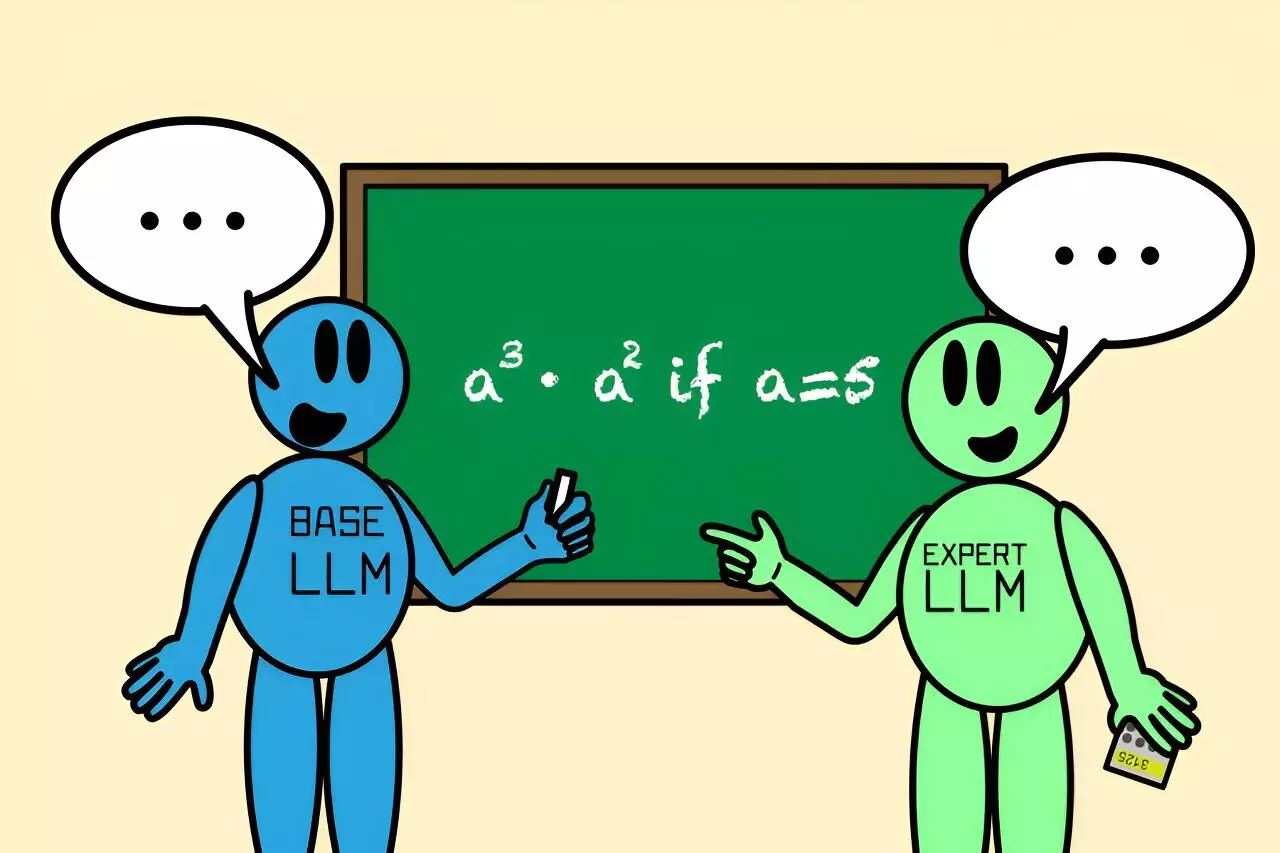Have you ever encountered a situation where you had only partial knowledge about a particular topic? It can be frustrating to provide an incomplete or inaccurate response, leading many of us to seek assistance from friends or experts who may have a deeper understanding. This collaborative principle isn’t just a human behavior; it’s also something that artificial intelligence and large language models (LLMs) are striving to replicate. Historically, teaching LLMs when to seek help from other models has been a complex challenge, involving cumbersome methods and extensive datasets. However, recent advancements at MIT’s Computer Science and Artificial Intelligence Laboratory (CSAIL) present an innovative solution that mirrors human collaboration—a model named Co-LLM.
At its core, Co-LLM operates on the premise that just like a student might consult a knowledgeable peer during a study session, LLMs can benefit from associating a general-purpose model with a specialized one. The unique algorithm allows these two entities to work in tandem, enhancing the generation of answers, especially in specialized fields such as medicine, mathematics, and reasoning problems. Co-LLM’s strategy differs from traditional approaches. Instead of relying solely on pre-defined rules or labor-intensive labeled data to dictate when two models should collaborate, it taps into machine learning to create a “switch variable.” This tool evaluates the proficiency of each word generated in real-time, effectively serving as a project manager that determines when the specialized model’s input is crucial.
When employing Co-LLM, the general-purpose LLM begins drafting a response, going through each token in its output for potential enhancement opportunities. For example, if tasked with discussing factors related to an extinct bear species, the algorithm allows Co-LLM to identify parts of the response where a specialized model could provide a more accurate or contextually relevant detail, such as the extinction event’s date. This process not only produces superior answers but also optimizes the efficiency of the response generation by invoking the specialized model only as necessary. Consequently, the overall operational strain is lessened, allowing for quicker and more reliable information retrieval.
Shannon Shen, a Ph.D. student at MIT and one of the principal authors behind the publication pertaining to Co-LLM, underscores the approach’s novelty. It creates a dynamic learning environment where both models evolve their collaboration strategies organically, akin to natural human interactions. By training the base model with domain-specific data, Co-LLM does not merely assign tasks; it teaches the model to recognize its weaknesses and when to depend on its more knowledgeable counterpart.
Practical Applications and Limitations
Impressively, Co-LLM has demonstrated its versatility across various disciplines. For instance, in biomedical scenarios, it can assist in deriving answers to complex medical queries by linking a general LLM with specialized models trained on pertinent datasets. This capability is crucial when dealing with intricate subjects like drug ingredients or disease mechanisms that may elude a generic model’s computational grasp. By leveraging models like Meditron—trained on vast medical data—Co-LLM bolsters accuracy significantly, returning reliable information that a solo LLM would often misrepresent.
Moreover, Co-LLM’s collaborative nature addresses one critical issue: user awareness. The algorithm prompts users to verify specific pieces of information, ensuring that they remain engaged and discerning of the answers provided. In mathematical contexts, for instance, a general-purpose model might miscalculate a problem. However, with the informed expertise from a specialized math model, inaccuracies are rectified effectively, showcasing Co-LLM’s ability to pool strengths and promote error-free exchanges.
Future Prospects and Innovations
Looking ahead, the development team at MIT aims to advance Co-LLM by learning from tangible human correction strategies. They plan to implement a method to address inaccuracies from the specialized model, allowing the system to pivot back and adjust responses dynamically. This self-correcting mechanism would fortify the model’s reliability.
Additionally, keeping information current is pivotal in any collaborative tool. Thus, enhancing Co-LLM to update specialized models using only the base model’s training could ensure continuous access to the latest data. The eventual goal is to deploy this evolving model as a versatile assistant capable of managing enterprise document updates while maintaining adherence to security protocols.
Colin Raffel, an associate professor and researcher, notes the promising implications of Co-LLM. By operating on a token-level routing mechanism, Co-LLM embodies a flexible workflow that sets it apart from existing collaborative models, making it a significant breakthrough in the realm of LLM interactions. As the development of artificial intelligence progresses, the collaboration between models may not only become more sophisticated but also significantly enhance the quality of information generated for users, ultimately leading to a more informed and interconnected world.

